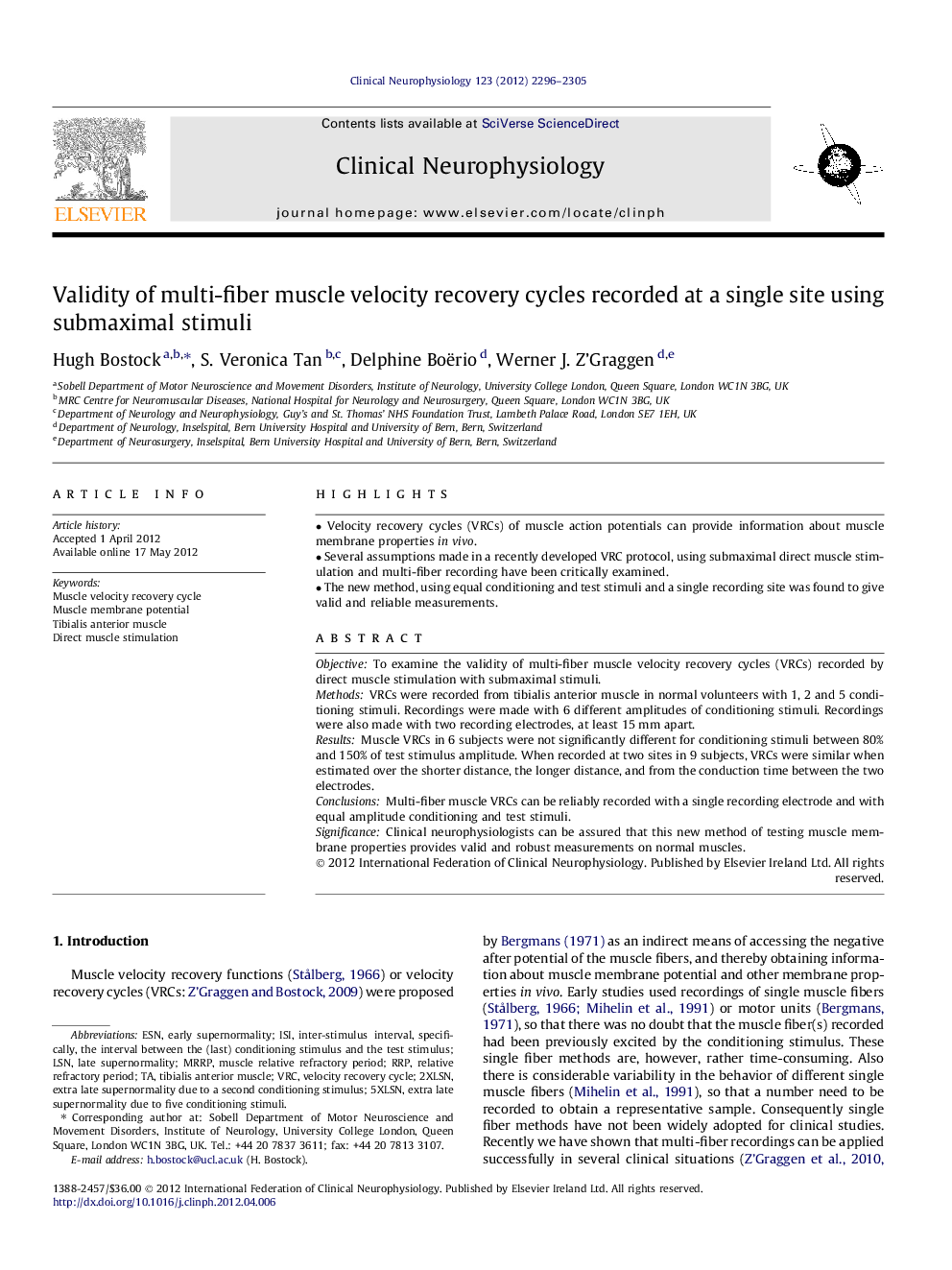| Article ID | Journal | Published Year | Pages | File Type |
|---|---|---|---|---|
| 3043122 | Clinical Neurophysiology | 2012 | 10 Pages |
ObjectiveTo examine the validity of multi-fiber muscle velocity recovery cycles (VRCs) recorded by direct muscle stimulation with submaximal stimuli.MethodsVRCs were recorded from tibialis anterior muscle in normal volunteers with 1, 2 and 5 conditioning stimuli. Recordings were made with 6 different amplitudes of conditioning stimuli. Recordings were also made with two recording electrodes, at least 15 mm apart.ResultsMuscle VRCs in 6 subjects were not significantly different for conditioning stimuli between 80% and 150% of test stimulus amplitude. When recorded at two sites in 9 subjects, VRCs were similar when estimated over the shorter distance, the longer distance, and from the conduction time between the two electrodes.ConclusionsMulti-fiber muscle VRCs can be reliably recorded with a single recording electrode and with equal amplitude conditioning and test stimuli.SignificanceClinical neurophysiologists can be assured that this new method of testing muscle membrane properties provides valid and robust measurements on normal muscles.
► Velocity recovery cycles (VRCs) of muscle action potentials can provide information about muscle membrane properties in vivo. ► Several assumptions made in a recently developed VRC protocol, using submaximal direct muscle stimulation and multi-fiber recording have been critically examined. ► The new method, using equal conditioning and test stimuli and a single recording site was found to give valid and reliable measurements.
